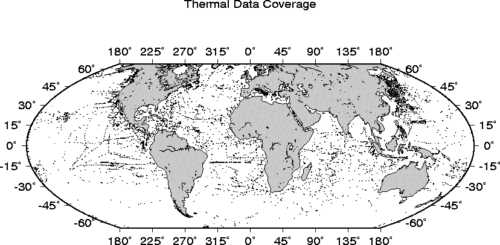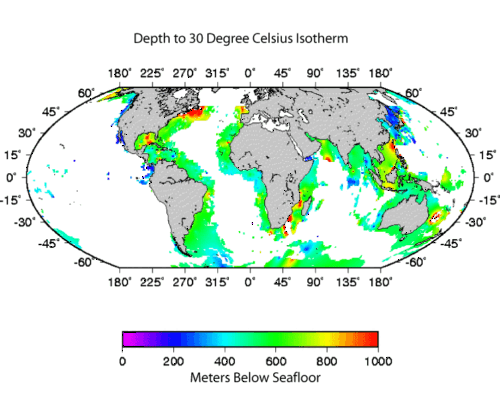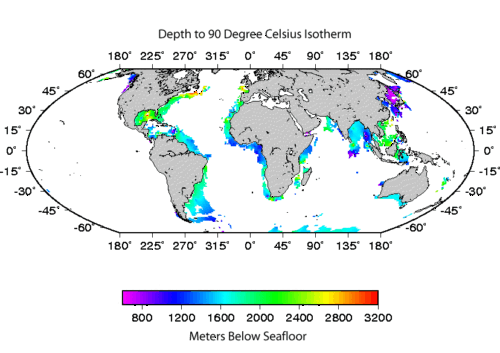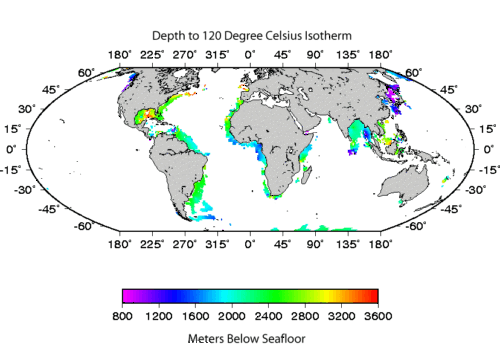The depth to sediment isotherms presented in this web site are based on two data sets. The first is the thermal data compiled by Pollack et al., 1993. Their data coverage is shown below:

The second data set is the depth to basement. More precisely defined as depth to acoustic basement. This data set was compiled by David Divens at NGDC from a series of other studies .
The depth to any isotherm is calculated by a simple linear extrapolation of the near-surface thermal gradient. If the calculated depth occurs above the depth of acoustic basement, then the area is shaded to indicate the depth at which the isotherm occurs in the sediments. If the depth to acoustic basement is reached before the temperature of the isotherm, then the isotherm does not occur in the sediments at that location, and the location is left unshaded on the isotherm map.
For the maps below, white shading indicates areas where the isotherm does not occur within the sediments, but within the basement rock. These maps are based on the data and limitations discussed in Sediment Isotherms.
30 Degree Celsius

60 Degree Celsius

90 Degree Celsius

120 Degree Celsius

